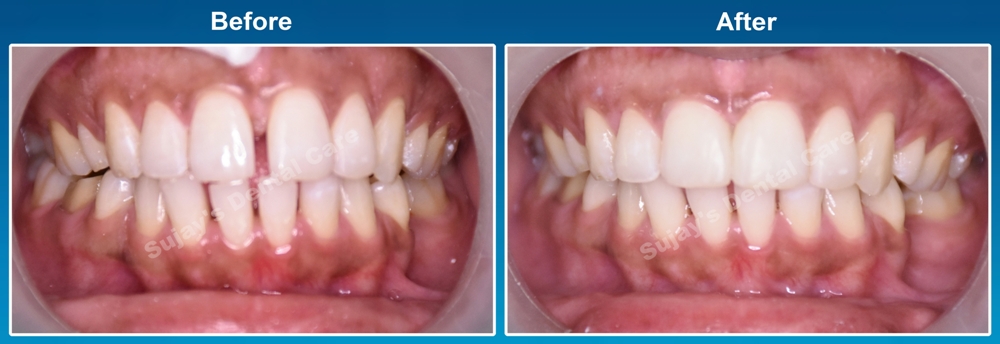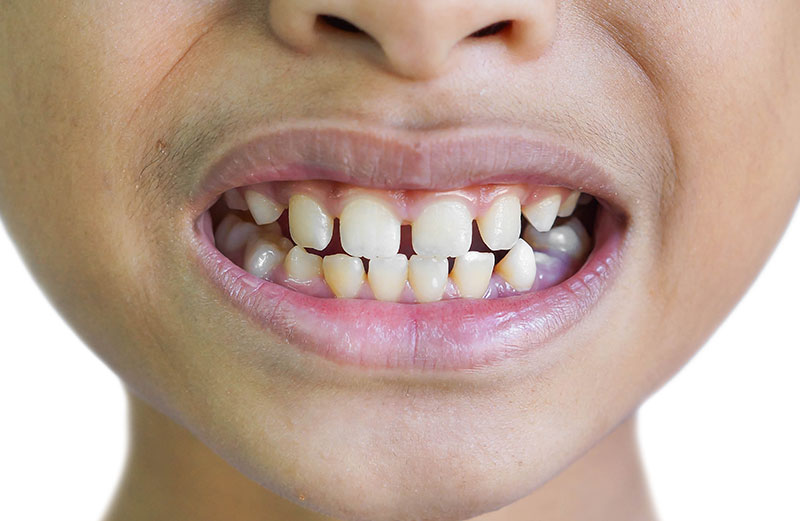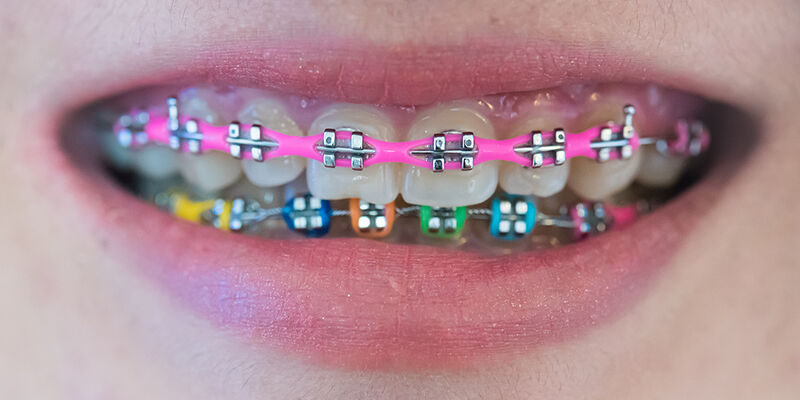Midline diastema treatment

A midline diastema refers to a gap or space between the two upper front teeth. While some people consider a diastema to be a unique and attractive feature, others may wish to close the gap for aesthetic or functional reasons. This comprehensive guide covers the causes of midline diastema, the diagnostic process, and various treatment options available.
Understanding Midline Diastema
A midline diastema can be caused by various factors, including genetics, habits, and dental conditions. Understanding the underlying cause is essential for selecting the most appropriate treatment.
Common Causes of Midline Diastema:
- Genetics: Some individuals naturally have a wider spacing between their upper front teeth due to the size and shape of their jaw and teeth.
- Frenum Attachment: The labial frenum is the small piece of tissue that connects the inside of the upper lip to the gums above the two front teeth. An unusually thick or low-attaching frenum can push the teeth apart, causing a diastema.
- Habits: Childhood habits such as thumb sucking, tongue thrusting, or lip sucking can create pressure that leads to the formation of a gap between the front teeth.
- Tooth Size Discrepancy: A mismatch in the size of teeth, particularly if the upper front teeth are smaller compared to the surrounding teeth, can lead to a gap.
- Periodontal Disease: Advanced gum disease can cause the gums and bone that support the teeth to recede, leading to gaps between teeth.
- Tooth Loss: Losing a tooth, especially a front tooth, can cause the remaining teeth to shift and create a diastema.
Diagnosing Midline Diastema
A thorough dental examination is necessary to diagnose the cause of a midline diastema. The diagnostic process typically includes:
- Visual Examination: The dentist will visually inspect the gap and surrounding teeth and gums.
- X-rays: Dental X-rays can help identify underlying issues such as bone loss, impacted teeth, or the positioning of the teeth and roots.
- Frenum Assessment: The dentist may evaluate the attachment of the labial frenum to determine if it contributes to the diastema.
- Bite Analysis: Assessing the patient’s bite can help identify malocclusion or other alignment issues contributing to the gap.
Treatment Options for Midline Diastema
Treatment for a midline diastema depends on the underlying cause, the size of the gap, and the patient’s preferences. Here are the most common treatment options:
1. Orthodontic Treatment
Orthodontic treatment is often the most effective and permanent solution for closing a midline diastema, especially if the gap is caused by misalignment or spacing issues.
- Braces: Traditional braces use brackets and wires to apply gentle pressure and move the teeth into their correct positions. Braces can be highly effective in closing gaps and correcting other alignment issues.
- Clear Aligners: Clear aligners, such as Invisalign, offer a more discreet alternative to traditional braces. These removable trays gradually shift teeth into place and can be particularly appealing to adults and teens.
2. Dental Bonding
Dental bonding involves applying a tooth-colored composite resin to the teeth on either side of the gap. The resin is shaped to match the natural teeth and hardened with a special light.
- Advantages: Dental bonding is a quick and relatively inexpensive solution that provides immediate results.
- Disadvantages: Bonding material is less durable than other restorative options and may require replacement or touch-ups over time.
3. Porcelain Veneers
Porcelain veneers are thin, custom-made shells that cover the front surface of the teeth. Veneers can effectively mask a diastema and improve the overall appearance of the smile.
- Advantages: Veneers provide a durable and natural-looking solution that resists staining.
- Disadvantages: The process requires the removal of a small amount of enamel from the teeth, making it an irreversible treatment.
4. Dental Crowns
Dental crowns, or caps, can be placed over the teeth to close a diastema, especially if the teeth are also damaged or have other cosmetic issues.
- Advantages: Crowns offer a strong and long-lasting solution that can also improve the function of the teeth.
- Disadvantages: Crowns require more tooth structure to be removed compared to veneers and bonding.
5. Frenectomy
If a thick or low-attaching labial frenum is causing the diastema, a minor surgical procedure called a frenectomy may be necessary. This procedure involves removing or repositioning the frenum to allow the teeth to move closer together.
- Advantages: A frenectomy can prevent the diastema from reopening after orthodontic treatment.
- Disadvantages: Some patients may require additional orthodontic treatment to close the gap after the frenectomy.
Combination Treatments
In some cases, a combination of treatments may be necessary to achieve the desired results. For example, a frenectomy may be performed in conjunction with orthodontic treatment to close the gap and prevent it from reopening.
Maintaining Results
After closing a midline diastema, maintaining the results is crucial to prevent the gap from reappearing. Here are some tips for maintaining a gap-free smile:
- Retainers: After orthodontic treatment, wearing retainers as prescribed by your orthodontist is essential to keep the teeth in their new positions.
- Good Oral Hygiene: Practicing good oral hygiene, including regular brushing, flossing, and dental check-ups, helps maintain healthy gums and teeth.
- Addressing Habits: Breaking habits such as thumb sucking or tongue thrusting can prevent the diastema from returning.
Conclusion
A midline diastema can be effectively treated using a variety of methods, depending on the underlying cause and the patient’s preferences. Orthodontic treatment, dental bonding, porcelain veneers, dental crowns, and frenectomy are all viable options. A thorough diagnosis by a dental professional is essential to determine the best treatment plan. Maintaining the results through good oral hygiene and wearing retainers is crucial for long-term success. If you have a midline diastema and are considering treatment, consult with your dentist or orthodontist to explore the best options for achieving a healthy, beautiful smile.
Related to read:
Best Oral Hygiene Practices For Optimum Oral Health.
How to Whiten Teeth Naturally?
How to keep your gums healthy and disease-free?
References
To ensure the information provided is accurate and up-to-date, the following sources were referenced:
- American Dental Association. (n.d.). Plaque and Tartar. Retrieved from ADA website
- Mayo Clinic. (n.d.). Dental Plaque. Retrieved from Mayo Clinic website
- National Institute of Dental and Craniofacial Research. (n.d.). Periodontal (Gum) Disease. Retrieved from NIDCR website
How Do You Fix Midline Diastema?
Fixing a midline diastema involves several potential treatment options, each tailored to address the gap based on its cause, size, and the patient’s preferences. Here are the primary methods used to fix a midline diastema:
- Orthodontic Treatment:
- Braces: Traditional metal or ceramic braces are highly effective in gradually moving teeth into their correct positions, closing gaps, and correcting overall alignment.
- Clear Aligners: Invisalign or other clear aligners are a discreet alternative to braces. They are custom-made, removable trays that progressively shift teeth into place.
- Dental Bonding:
- In dental bonding, a tooth-colored composite resin is applied to the teeth on either side of the gap. The resin is shaped and hardened with a special light, creating a natural look that fills the diastema.
- Porcelain Veneers:
- Veneers are thin, custom-made shells of porcelain that are bonded to the front surfaces of the teeth. They can effectively mask the gap and enhance the overall appearance of the teeth.
- Dental Crowns:
- Crowns, also known as caps, can be placed over the teeth to close a diastema. This option is particularly useful if the teeth are also damaged or have other cosmetic issues.
- Frenectomy:
- If the diastema is caused by a thick or low-attaching labial frenum, a frenectomy (surgical removal or repositioning of the frenum) may be necessary. This procedure can help close the gap and prevent it from reopening after orthodontic treatment.
Which Treatment is Best for Diastema?
The best treatment for a diastema depends on several factors, including the cause of the gap, the size of the gap, the patient’s overall dental health, and personal preferences. Here are some considerations for choosing the best treatment:
- Orthodontic Treatment:
- Best For: Significant gaps, misaligned teeth, or bite issues.
- Advantages: Provides a long-term solution and can correct multiple alignment issues simultaneously.
- Disadvantages: Longer treatment duration and may involve visible braces.
- Dental Bonding:
- Best For: Small to moderate gaps.
- Advantages: Quick, non-invasive, and cost-effective.
- Disadvantages: Less durable than other options and may require periodic touch-ups.
- Porcelain Veneers:
- Best For: Moderate gaps and patients seeking a significant aesthetic improvement.
- Advantages: Durable, stain-resistant, and natural-looking.
- Disadvantages: More expensive and involves removing some enamel from the teeth.
- Dental Crowns:
- Best For: Large gaps or when teeth are also damaged.
- Advantages: Strong and durable, can improve both function and appearance.
- Disadvantages: Involves more extensive tooth preparation.
- Frenectomy:
- Best For: Gaps caused by a prominent labial frenum.
- Advantages: Can effectively address the root cause of the gap and is often combined with orthodontic treatment.
- Disadvantages: Minor surgical procedure with some recovery time.
What is the Most Common Cause of Midline Diastema?
The most common cause of a midline diastema is a discrepancy in tooth size and jaw size. When the teeth are too small for the jaw, gaps can form between them. However, other factors can also contribute, including:
- Frenum Attachment: An oversized or improperly attached labial frenum can push the two front teeth apart.
- Genetics: Diastema can be hereditary, with family members sharing similar dental spacing patterns.
- Habits: Childhood habits like thumb sucking, tongue thrusting, or lip sucking can exert pressure on the teeth, causing a gap.
- Tooth Loss: Loss of a tooth, especially if it’s a front tooth, can cause neighboring teeth to shift, leading to gaps.
- Periodontal Disease: Advanced gum disease can lead to bone loss and gum recession, resulting in teeth moving and creating gaps.
How Do You Fix Diastema Without Braces?
If you prefer not to use braces, there are several other effective methods to fix a diastema:
- Dental Bonding:
- This quick and relatively inexpensive procedure involves applying a tooth-colored composite resin to the teeth to fill in the gap. It provides immediate results and can be completed in one visit.
- Porcelain Veneers:
- Veneers are custom-made shells that cover the front surface of the teeth, masking the gap and improving the smile’s appearance. They are durable and provide a long-lasting solution.
- Dental Crowns:
- Crowns can be used to close gaps, especially if the teeth are also damaged or have other aesthetic issues. They provide a strong and permanent solution.
- Frenectomy:
- If the gap is due to a prominent labial frenum, a frenectomy can remove or reposition the frenum. This is often combined with other cosmetic procedures to close the gap.
- Orthodontic Aligners:
- Clear aligners like Invisalign can be used to close gaps without the need for traditional braces. These removable trays are less visible and more comfortable than braces.
Each treatment option has its advantages and considerations. Consulting with a dentist or orthodontist will help determine the best approach based on your specific needs and preferences.
Can You Fix Midline Diastema Without Braces?
Yes, you can fix a midline diastema without braces. There are several alternative treatments available:
- Dental Bonding:
- This involves applying a tooth-colored resin to the teeth on either side of the gap. The resin is shaped and hardened to match the natural teeth, effectively closing the gap.
- Porcelain Veneers:
- Veneers are thin shells of porcelain that are bonded to the front surfaces of the teeth. They can mask the gap and improve the appearance of the teeth.
- Dental Crowns:
- Crowns can be placed over the teeth to close the gap, particularly if the teeth are also damaged or have other cosmetic issues.
- Frenectomy:
- If a prominent labial frenum is causing the gap, a frenectomy (surgical removal or repositioning of the frenum) can help close the gap and prevent it from reopening.
How to Reduce Gap Between Teeth Naturally at Home?
Reducing a gap between teeth naturally at home is challenging, and professional treatment is generally recommended for safe and effective results. However, certain measures can help manage minor gaps:
- Orthodontic Bands:
- Small orthodontic bands can be placed around teeth to gradually bring them closer together. This method is not recommended without professional supervision due to potential risks.
- Good Oral Hygiene:
- Maintaining excellent oral hygiene can prevent further gum issues and stabilize teeth, potentially minimizing the gap over time.
- Healthy Diet:
- Consuming a balanced diet rich in vitamins and minerals supports overall oral health, which can contribute to better dental alignment.
What is the Cheapest Way to Fix Diastema?
The most cost-effective ways to fix a diastema include:
- Dental Bonding:
- Dental bonding is often the least expensive professional treatment for closing gaps between teeth. It provides immediate results and can be completed in one visit.
- DIY Orthodontic Bands:
- While not generally recommended without professional guidance, using orthodontic bands at home can be a low-cost option. However, this method carries risks and should be approached with caution.
- Dental Flippers:
- For temporary closure of gaps, dental flippers (removable partial dentures) can be a budget-friendly option. However, they are not a permanent solution.
Can Diastema Be Fixed Permanently?
Yes, diastema can be fixed permanently with proper treatment:
- Orthodontic Treatment:
- Braces or clear aligners provide a permanent solution by moving teeth into the correct position.
- Porcelain Veneers:
- Veneers offer a long-lasting solution by covering the front surfaces of the teeth and masking the gap.
- Dental Crowns:
- Crowns provide a durable and permanent fix by covering the entire tooth and closing the gap.
- Frenectomy:
- For diastemas caused by a prominent labial frenum, a frenectomy combined with orthodontic treatment can permanently close the gap.
How to Close Diastema?
Closing a diastema involves choosing the appropriate treatment based on the cause and size of the gap:
- Orthodontic Treatment: Braces or clear aligners to move teeth into the correct position.
- Dental Bonding: Applying composite resin to the teeth on either side of the gap.
- Porcelain Veneers: Bonding thin shells of porcelain to the front surfaces of the teeth.
- Dental Crowns: Placing crowns over the teeth to close the gap.
- Frenectomy: Surgical removal or repositioning of a prominent labial frenum if it is causing the gap.
How Long Does It Take for Midline Diastema to Close?
The time required to close a midline diastema varies based on the chosen treatment:
- Orthodontic Treatment:
- Braces: Typically 6 months to 2 years.
- Clear Aligners: 6 months to 1.5 years, depending on the severity of the gap.
- Dental Bonding:
- Immediate results, usually completed in a single dental visit.
- Porcelain Veneers:
- Typically requires 2 to 3 dental visits over a few weeks.
- Dental Crowns:
- Usually completed in 2 to 3 visits over a few weeks.
- Frenectomy:
- The surgical procedure is quick, but additional orthodontic treatment may be needed for permanent results.
What Are the Risks of Diastema?
While some people may not experience any issues with a diastema, there are potential risks associated with having a gap between teeth:
- Aesthetic Concerns: Many individuals feel self-conscious about the appearance of a gap.
- Speech Issues: Gaps can affect pronunciation and speech patterns, leading to lisps or other speech impediments.
- Food Impaction: Food particles can easily get trapped in the gap, leading to increased risk of decay and gum disease.
- Bite Problems: Large gaps can affect the bite and overall alignment of the teeth, leading to jaw pain and other issues.
Does Diastema Increase with Age?
Diastema can increase with age due to several factors:
- Gum Disease: Periodontal disease can cause gum recession and bone loss, leading to the widening of gaps.
- Tooth Loss: Loss of teeth and subsequent shifting of remaining teeth can exacerbate gaps.
- Natural Shifting: Teeth can naturally shift over time due to changes in the jawbone and other factors.
Can Diastema Close Naturally?
Diastema may close naturally in some cases, particularly in children as their permanent teeth come in and their jaws develop. However, in adults, gaps are less likely to close on their own without intervention.
How to Close Gaps Between Teeth?
Closing gaps between teeth involves various treatment options:
- Orthodontic Treatment: Braces or clear aligners to move teeth into the correct position.
- Dental Bonding: Applying composite resin to the teeth on either side of the gap.
- Porcelain Veneers: Bonding thin shells of porcelain to the front surfaces of the teeth.
- Dental Crowns: Placing crowns over the teeth to close the gap.
- Frenectomy: Surgical removal or repositioning of a prominent labial frenum if it is causing the gap.
What is the Cheapest Way to Close a Gap in Your Teeth?
The most cost-effective methods for closing a gap in your teeth include:
- Dental Bonding: A relatively inexpensive and quick solution that provides immediate results.
- DIY Orthodontic Bands: Using orthodontic bands at home, though this method carries risks and should be approached with caution.
- Dental Flippers: Removable partial dentures can be a budget-friendly temporary option.
In conclusion, there are various effective ways to fix a midline diastema, ranging from professional treatments like orthodontics, dental bonding, veneers, crowns, and frenectomy, to more budget-friendly options. Understanding the underlying cause of the gap and consulting with a dental professional can help determine the best treatment plan for closing the gap and maintaining a healthy, beautiful smile.








